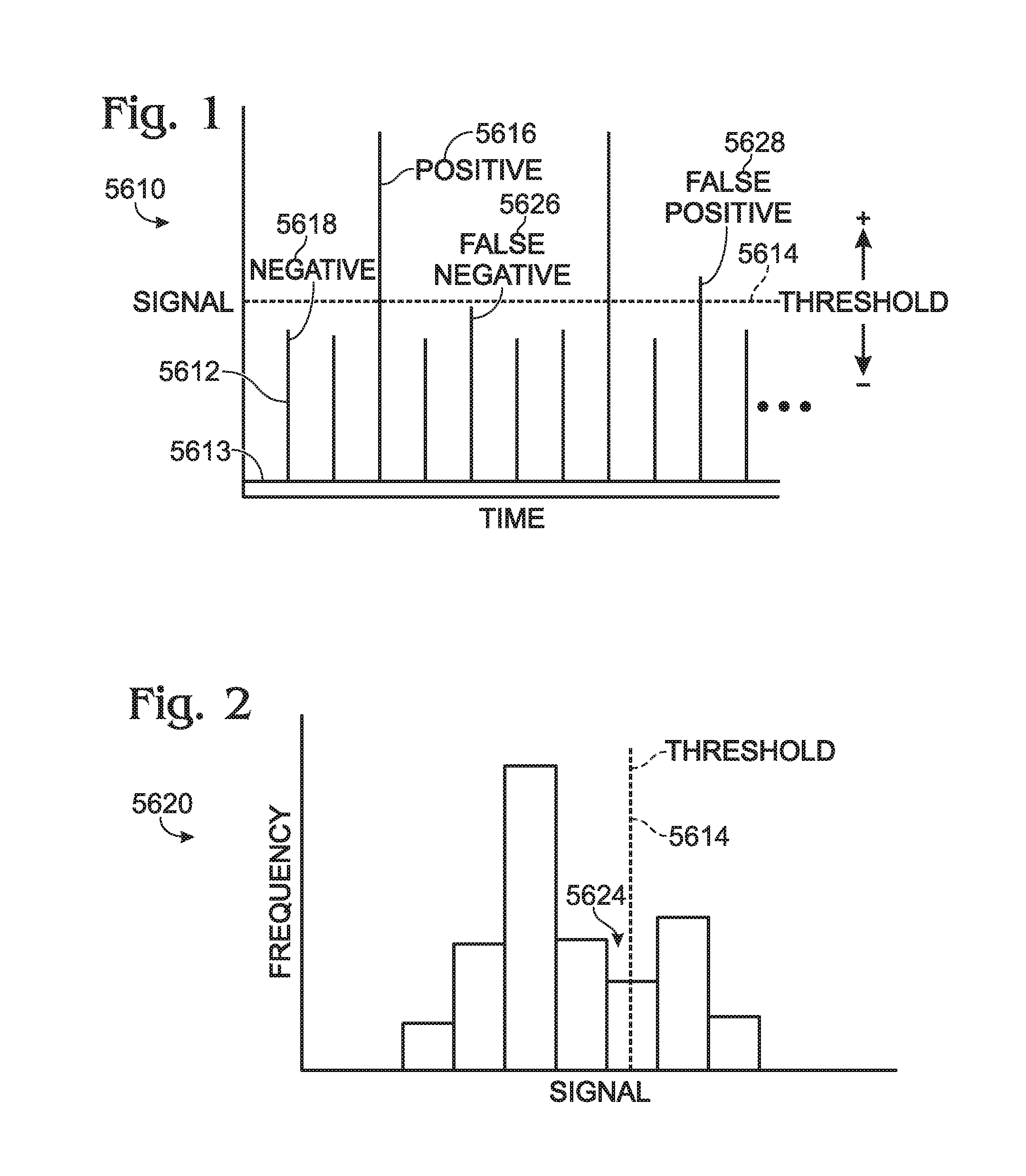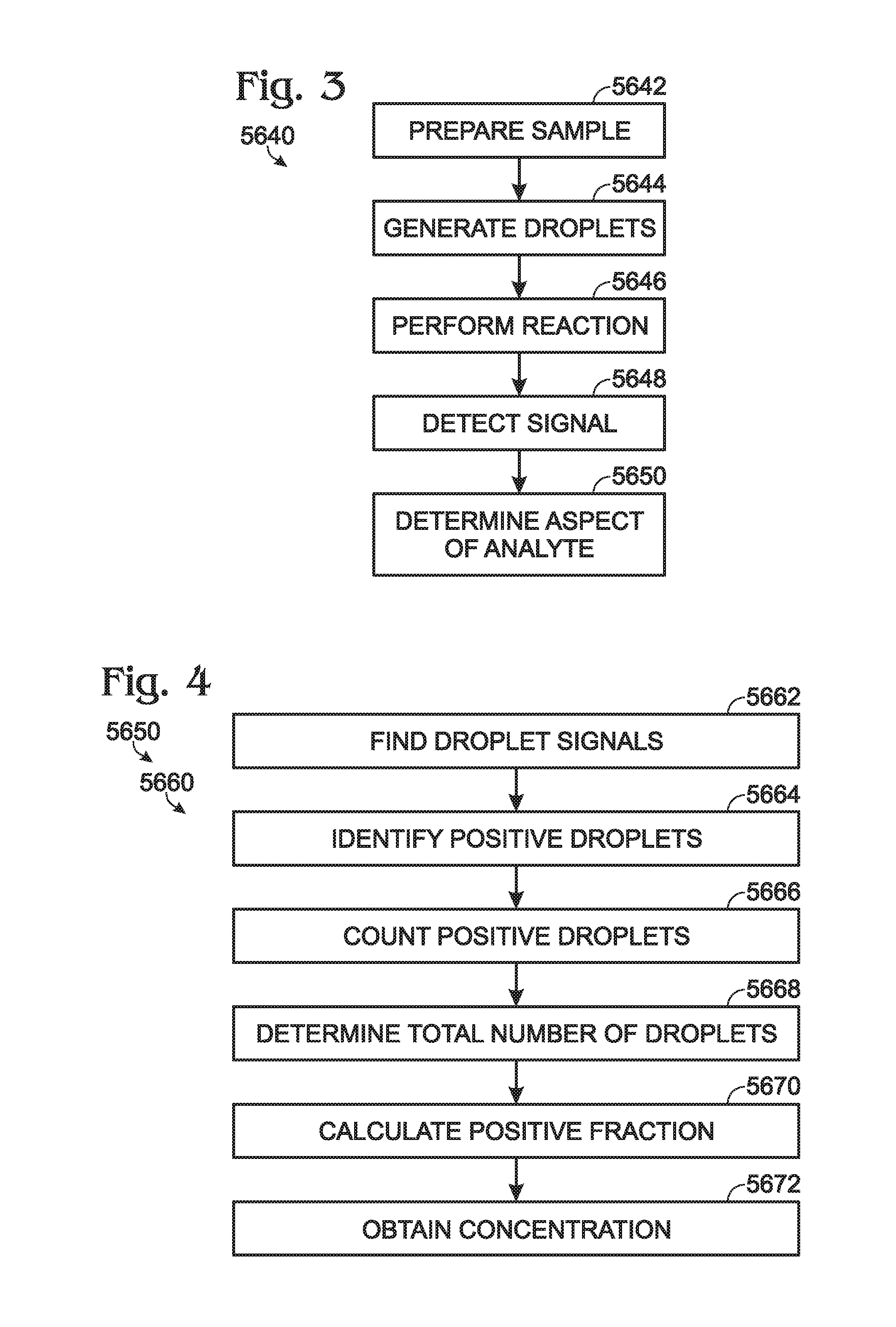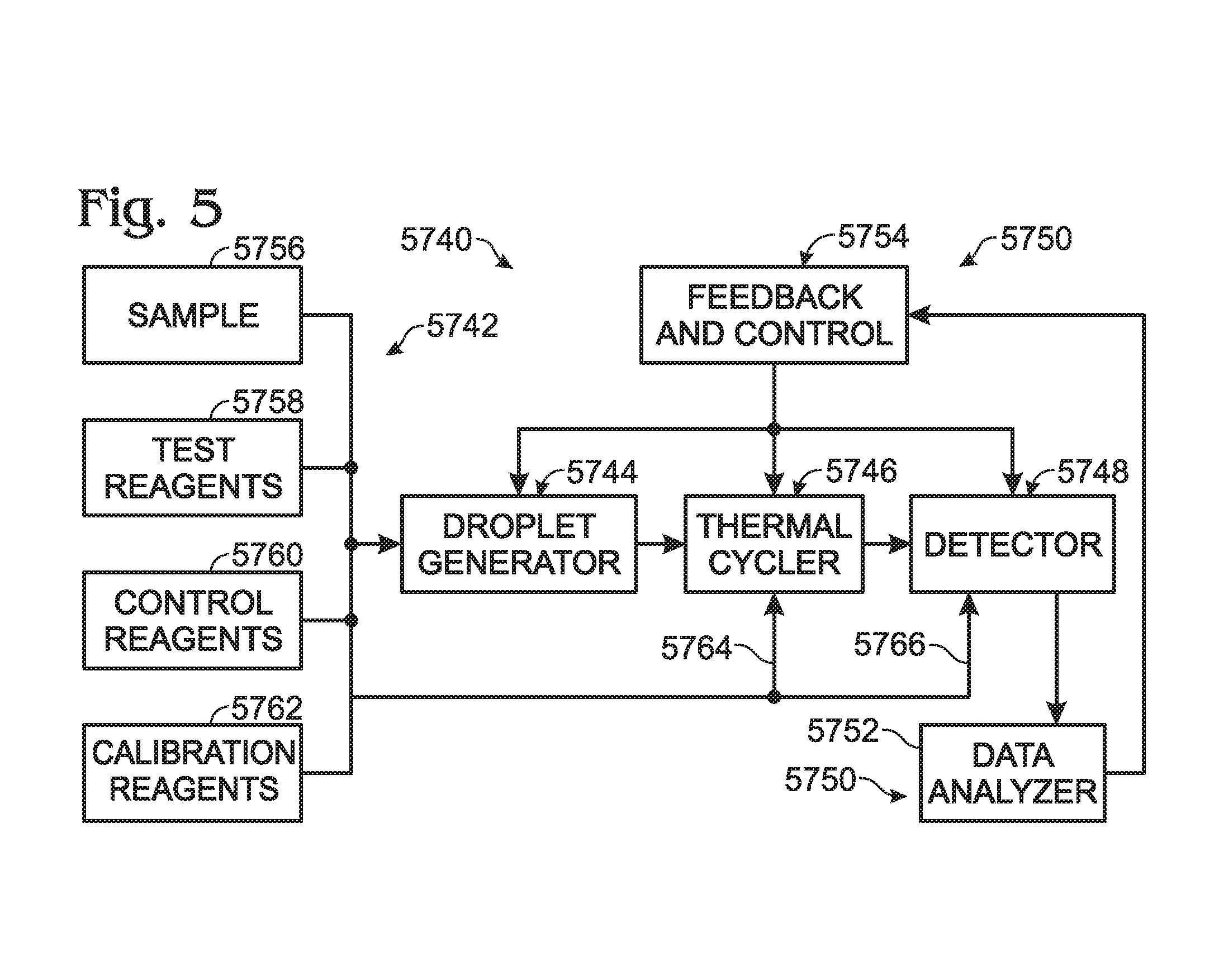Calibrations and controls for droplet-based assays
a droplet-based assay and control technology, applied in the field of ##droplet-based tests for amplification, can solve the problems of false negatives and false positives, erroneous results, and negative effects of false positives
- Summary
- Abstract
- Description
- Claims
- Application Information
AI Technical Summary
Benefits of technology
Problems solved by technology
Method used
Image
Examples
example 1
A. Example 1
Detection System 1
[0256]This example describes an optical detection system based on measuring the end-point fluorescence signal of each sample / reagent droplet after a PCR amplification process is complete. The exemplary system is suitable for making both qualitative and quantitative measurements; see FIGS. 28 and 29.
[0257]FIG. 28 depicts a cytometry-type optical detection system, generally indicated at 7200. The term “cytometry” refers to the fact that the detection system is configured to detect both scattered and fluorescence radiation. Detection system 7200 includes a radiation source 7202, transmission optics generally indicated at 7204, a forward scatter detector 7206, and a fluorescence detector 7208. The forward scatter detector may be replaced or augmented, in some embodiments, by side and / or back scatter detectors, among others, configured to detect light detected to the side or back of the sample, respectively. Similarly, the fluorescence detector may be replac...
example 2
B. Example 2
Detection Methods
[0270]This example describes a method of detecting fluorescence from sample-containing droplets that have undergone PCR thermocycling; see FIG. 30.
[0271]FIG. 30 is a flowchart depicting the steps of a fluorescence detection method, generally indicated at 7600, which may be performed in conjunction with a PCR system of DNA amplification according to the present disclosure. Although various steps of method 7600 are described below and depicted in FIG. 30, the steps need not necessarily all be performed, and in some cases may be performed in a different order than the order shown in FIG. 30.
[0272]At step 7602, sample-containing droplets are separated by a desired average distance. This may be accomplished, for example, by various flow focusing techniques such as those described above (i.e., by flow focusing the droplets as they are generated), and / or by generating droplets at a suitable rate. In cases of batch detection such as in a stop-flow system, it may...
example 3
C. Example 3
Additional Embodiments
[0279]This example describes additional aspects of sample detection, in accordance with aspects of the present disclosure, presented without limitation as a series of numbered sentences.
[0280]1. A method of detecting target molecule concentration in a sample, comprising (A) generating sample-containing droplets with a droplet generator; (B) amplifying target molecules within the droplets; (C) transferring the droplets through an intersection region where the droplets encounter radiation from a radiation source; (D) estimating the volume of each droplet based on a measurement performed as the droplet passes through the intersection region; (E) detecting fluorescence intensity emitted by each droplet; and (F) for each droplet, if the estimated volume of the droplet falls within a predetermined range then using the fluorescence intensity emitted by the droplet in a determination of target molecule concentration in the sample, and if the estimated volum...
PUM
| Property | Measurement | Unit |
|---|---|---|
| average volume | aaaaa | aaaaa |
| average volume | aaaaa | aaaaa |
| diameter | aaaaa | aaaaa |
Abstract
Description
Claims
Application Information
 Login to View More
Login to View More - R&D
- Intellectual Property
- Life Sciences
- Materials
- Tech Scout
- Unparalleled Data Quality
- Higher Quality Content
- 60% Fewer Hallucinations
Browse by: Latest US Patents, China's latest patents, Technical Efficacy Thesaurus, Application Domain, Technology Topic, Popular Technical Reports.
© 2025 PatSnap. All rights reserved.Legal|Privacy policy|Modern Slavery Act Transparency Statement|Sitemap|About US| Contact US: help@patsnap.com



